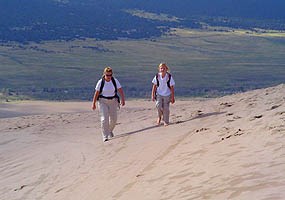
NPS/Scott Hansen We want your visit to be safe and worry-free. Here are the basics you need to know as you plan your visit:Hot SandSurface temperatures on the dunes may reach 150 degrees F on summer afternoons. To avoid heat exhaustion and burned feet, plan to hike the dunes in early morning or evening in summer months. Hot sand can blister or even cause second-degree burns on bare feet, the tops of feet (when wearing sandals), and any exposed skin that comes in contact with the hot sand. Wear closed-toe shoes when hiking on the sand. Take sunscreen, as skin burns easily at this high elevation (8,200 feet/2,499m at the visitor center). Remember your pet's feet are sensitive to burns, too. Sand CollapseDo not allow children to dig deep holes at the base of dunes. Rarely, dune slipfaces may collapse the hole, partially trapping a child. Wind and SandWhile it's actually often calm here, winds can arise during storm fronts at any time of year. Spring is the main windy season, especially spring afternoons. Check weather forecasts in advance. While light breezes won't blow sand into the air, strong winds can create wind-blown sand that can be painful and or get into your eyes. 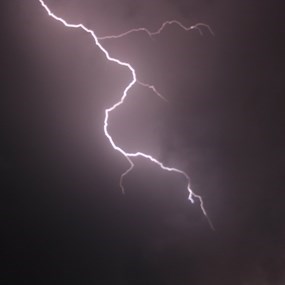
NPS Photo PetsTo avoid heat exhaustion and burned feet, plan to take your pet on the dunes only in early morning or evening in summer months. Surface temperatures often soar over 150 degrees F on summer afternoons, so shady mountain trails, including Montville/Mosca Pass Trails and Zapata Falls are better options. Pets must be on a leash and attended at all times to prevent encounters with wildlife. Never leave a pet in a car on a summer day; temperatures can reach 100+ degrees within minutes. High ElevationThe visitor center and campground areas are about 8,200 feet (2,499m) above sea level. The highest elevation in the park and preserve is 13,604 feet (4,146m). Some people experience headaches, dehydration, fatigue, sleeplessness, rapid heartbeat, and shortness of breath at higher altitudes. Drink plenty of liquids, avoid alcohol and caffeine, and move slowly until your body acclimates over a day or two. LightningThe dunes, mountains, and grasslands are subject to lightning strikes, especially on summer afternoons. When you see storm clouds forming or hear thunder, seek shelter in a building or in your vehicle. Use a lightning app to track the proximity of each strike. Wait at least 30 minutes after the last strike in the area before returning outdoors. Water QualityThe water in the park is clean mountain snowmelt, but surface water may contain bacteria such as giardia. Backcountry hikers in the Rocky Mountains should treat any surface water by filtering or boiling. 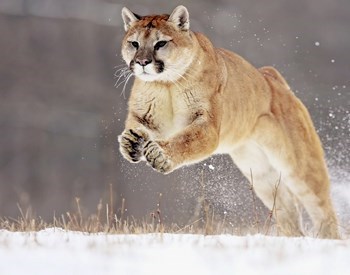
NPS Photo Mountain LionsWhile mountain lions are very secretive and only rarely observed, their presence here is obvious from their tracks that are commonly seen in the foothills and edges of the dunes along Medano Creek. They are primarily nocturnal in the warmer months. There have been no reported mountain lion attacks at Great Sand Dunes, but it's wise to stay alert when walking in their habitat. Always hike together as a group; children should not run ahead. A hiking stick is a useful tool for lion defense. If you see a lion close to you: 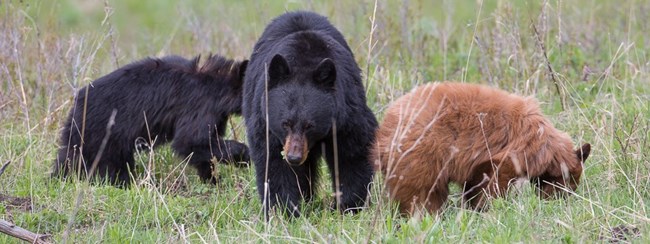
NPS Photo Black BearsBlack bears live in the foothills and mountains just above the dunes, but rarely visit the dunes. Despite their name, black bears can be black, brown, cinnamon, or even blonde in coloration. They are generally secretive and avoid humans. The most common safety problem is when campers or picnickers leave food out, inviting a bear into their site. 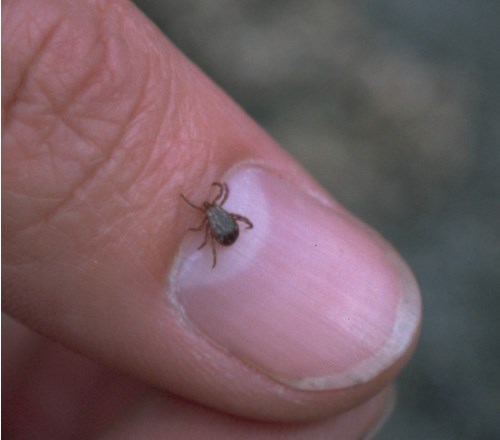
NPS Photo InsectsThe park has a relatively short 4-to-6-week mosquito season. In dry years, there may be few mosquitos, but in wet years, there can be very high numbers. As Medano Creek gets low and warm in the second week of June, mosquitos emerge in large numbers. Move away from vegetation, upstream, and on the far side of the creek to avoid the worst of the mosquitoes: they don't like open sand but prefer to be near shady bushes and trees. ReptilesVenomous snakes have never been seen in this high-elevation park. Only harmless, non-venomous snakes and lizards live in the park and preserve. Rattlesnakes are occasionally seen in lower elevations of the San Luis Valley, primarily in rocky areas. Deer, Elk, Pronghorn, and Small MammalsDeer, pronghorn, and elk are often seen in the park and on park roads. Be alert and drive slowly, especially at night, to avoid hitting one of these animals. |
Last updated: May 1, 2025
